By Jeffrey R. Yago, P. E., C.E.M.
Spring, 2019
During any emergency or related power outage, the most important electronic device you need to keep operating is your cell phone, at least as long as cellular service is still available. When disaster strikes, your cell phone allows instant communication with family and emergency services, directs you to a destination with detailed map directions, and provides emergency light. It lets you hear the latest news and weather alerts, search the internet, store copies of important insurance and medical policies, review service and instruction manuals, tell time, use the calculator, save multiple contacts’ information, play your favorite music, and have a built-in camera to photograph storm damage and record events.
In addition, free and low-cost apps allow you to listen to local police and fire communication channels, access distant AM and FM radio stations, have a compass for direction, and watch first aid and emergency training videos. The Red Cross and several government preparedness web sites even offer free cell phone apps that text your cell phone when there is a national disaster about to hit your area.
Unfortunately, these life-saving devices rarely operate longer than a day without being fully recharged. If the power is out and nightly charging is no longer possible, what then?
This article shows how to assemble a “power-up” bag filled with low-cost adaptors, cables, chargers, and battery packs which will be ready to pull out of the closet the moment the next power outage hits. By adding several LED flashlights and a portable AM/FM radio to this power-up bag, you can be assured of having lighting, radio communications, and a fully charged cell phone no matter how long the power outage lasts. Since this power-up bag is small and lightweight, it is also something you will want to grab if you are forced to evacuate, since it can keep any cell phone operating at home or on the go from almost any source of power.
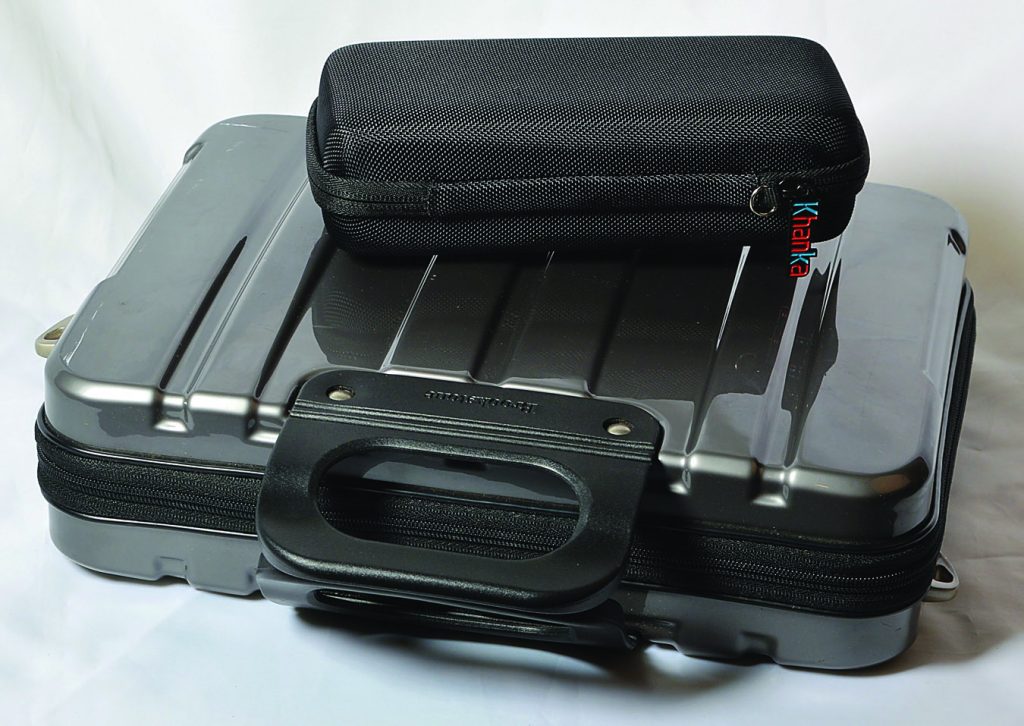
Many people live in apartments or condos where having a backup generator is just not possible. Others may have a generator, but most will not have even one week’s worth of fuel stored. Flashlights and battery-powered radios only work as long as you have extra batteries.
Even medical devices to monitor heart function or to control breathing while sleeping are available with an optional battery pack, but they still need to be recharged. Even rechargeable batteries only last a day or two before needing to be recharged, which is why the power-up bag also includes a solar charger.
Our nation’s electric grid is under far more stress today than at any time in our past, and power outages occur more often, last longer, and affect larger sections of the country. What if the next long-term outage occurs where you live?
We take for granted the multiple wall outlets in every room of our home or apartment, and never worry if there will be enough power when plugging in more than one appliance at the same time. We also never think about how we connect lights and appliances to these power outlets, since each use the same standard plugs, receptacles, and extension cords.
Unlike these grid-powered household appliances, which are all 120-volt AC, there is no standard voltage for battery-powered devices; the size and shape of DC power plugs and cables are different for each device. While many cell phones and smaller computing devices have become standardized to use 5-volt DC power supplied through a “USB” type charger plug and cable, most rechargeable flashlights, radios, walkie-talkies, and LED lanterns require 12-volts DC, supplied through a round plug with no single standard for plug diameter, plug length, or pin polarity. While laptop computers are also battery-powered, most have an 18 to 20-volt battery typically charged from a 120-volt AC adapter.
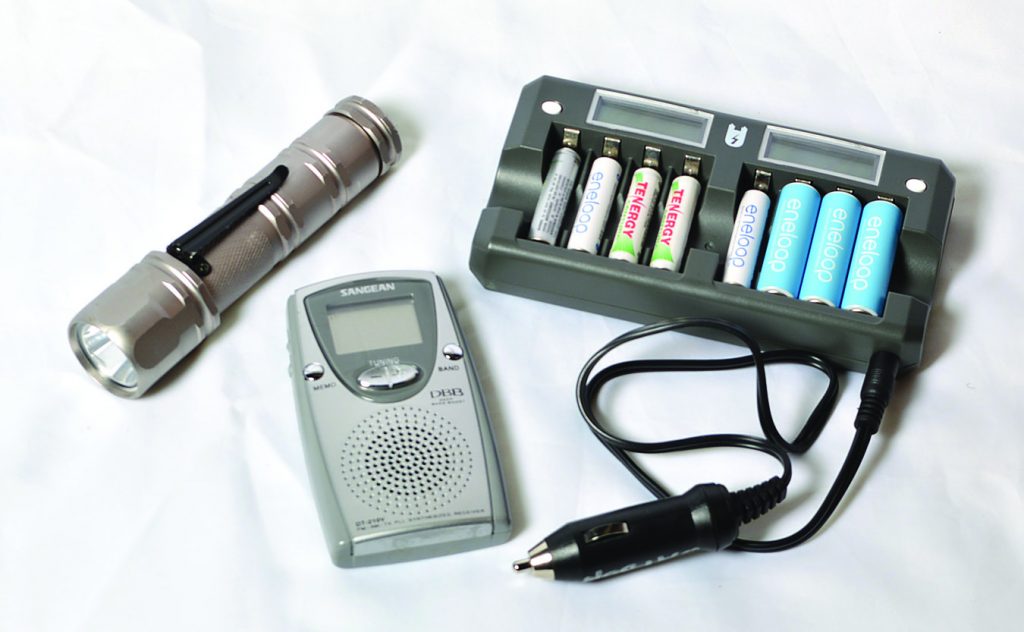
Most battery-powered electric devices, including portable radios, LED flashlights, and remote controls, are powered by AAA, AA, or C size disposable batteries and do not use a recharging plug and cable. Their batteries must either be discarded and replaced, or removed and placed into a battery charger when using rechargeable batteries. Unfortunately, most battery chargers are powered from a 120-volt AC wall outlet, which means it may not be possible to recharge these smaller batteries when the grid is down.
Even if you have DC adaptors to power each of your electronic devices and recharge their batteries, you may be limited during an emergency to a single point connection to a source of DC power; all those plugs, extension cords, and wall chargers you have laying around to connect multiple 120-volt AC devices will be useless for battery devices.
Emergency Battery Charging
Rechargeable battery packs with built-in USB type outlets are available with more than enough stored battery energy to recharge a cell phone multiple times without any external source of power — as long as you remembered to charge them up before the power outage! Most battery packs include two or more USB outlets and can fit into a shirt pocket, while larger models are available with both 5-volt USB and 12-volt DC charging outlets. Pricing is based on storage capacity of the internal battery. Units rated under 10,000 mAh (10 amp-hours) are typically used for multiple charging of cell phones only. Anything over 25,000 mAh (25 amp-hours) is better for multiple charging of iPads and tablet computers.
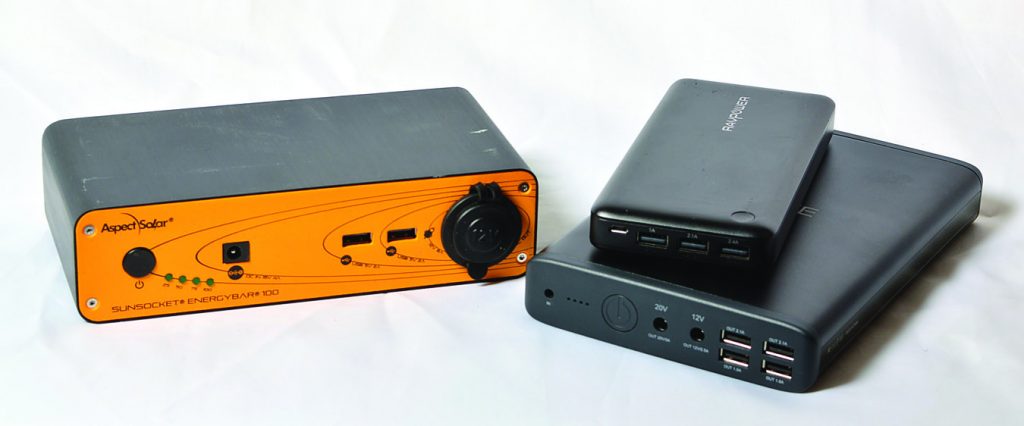
You need a plug-in vehicle charger for each cell phone and laptop or tablet computer to provide power during an extended grid outage. Battery-powered devices are much easier to keep operating than trying to power the 120-volt AC version of these devices. It’s also easier to provide emergency power for a battery-powered laptop or tablet computer than trying to power a larger desktop computer and monitor which require 120 volts AC.
Special Adapters & Chargers
Having adaptors that allow the charging of multiple 12-volt DC devices at the same time from a vehicle’s single 12-volt DC dashboard outlet will save engine runtime and fuel. Adding USB type adaptors to charge multiple 5-volt USB powered devices at the same time will also be invaluable during an extended power outage. Most USB type wall chargers and USB charging cables included with any new cellphone or electronic device purchase are typically inexpensive and have a very low charging output, which could take up to eight hours to fully recharge the device. Many of these inexpensive chargers have a 1.0 amp or less charging rate.
Newer and slightly more expensive USB chargers and charging cables can take less than two hours to fully recharge a device. During an extended power outage, you may be charging your electronic devices from an emergency generator, the dashboard outlet in your vehicle, a pre-charged battery pack, or even a solar module; in all cases you need to charge as fast as possible. This is especially important with a dwindling supply of vehicle or generator fuel or on those days with limited sun hours.
Be sure to select both 120-volt AC wall chargers and 12-volt DC vehicle chargers having a 2.1 amp or higher rated output for any battery powered device capable of handling this higher charging rate. In addition, you will need charging cables to go with these chargers which are rated for this higher amperage. These will have a heavier copper wire with a more durable braided outer covering. Chargers and charging cables specifically designed for iPads and iPhones are also now available with these higher amp ratings and provide much faster charging times.
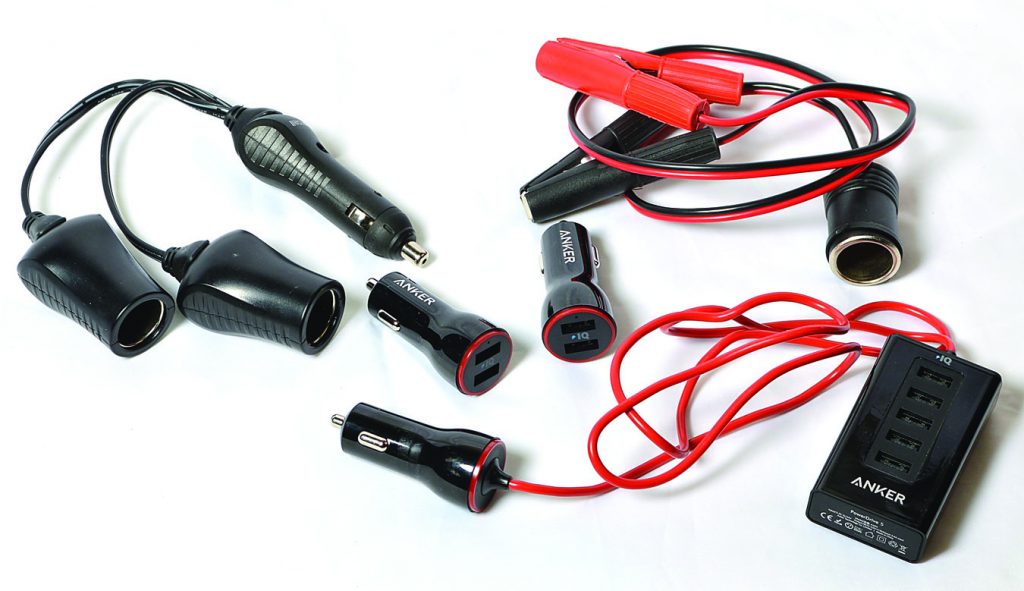
During an extended power outage, your first line of defense for backup power will be your own car or truck. If you have a full tank of gas, there are multiple ways a vehicle can be used to power or recharge all kinds of devices. Your power-up bag should include a multiple-outlet adaptor that plugs into your vehicle’s 12-volt dashboard outlet. These are available with three or more separate outlets which allow recharging multiple cell phones, laptop computers, and other battery-powered devices at the same time. However, you will still need the optional 12-volt DC chargers and charging cables to fit these adaptors.
Since most electronic devices require very little power to recharge, you will not want to run a vehicle for hours just to recharge a single cellphone. For example, most vehicle dashboard outlets are rated for 15 amps, while many electronic devices require less than one amp at 12 volts DC to recharge, so you will want adaptors to allow distributing out to multiple devices whenever possible.
Some devices do not include an optional DC power adapter and require 120-volt AC electricity to operate. For these 120-volt AC devices, it may be simpler to use a small DC to AC inverter supplied by a vehicle’s 12-volt dashboard outlet to provide this 120-volt AC power and not try to power these directly from a battery.
Most small inverters rated for 300 watts or less will include a “cigar” style plug to fit the vehicle’s 12-volt DC dashboard outlet. By parking as close as possible to the house, a quality outdoor-rated extension cord from this inverter will easily provide 120-volt AC to power Wi-Fi routers, modems, and satellite receivers which you may need to connect to the Internet when at home. To avoid draining the battery below the level needed to restart the vehicle, you should keep the engine running while powering these devices, and be sure to have adaptors and cables that will allow charging multiple battery-powered devices at the same time to minimize fuel usage.
Solar Chargers
Finally, there is another easy way to recharge cell phones, laptop computers, and battery powered lights, radios, and medical devices during an extended power outage when all other sources of emergency power have been depleted. A fold up solar module is a great way to charge a cell phone over and over, as long as you have a few hours of clear sun each day.
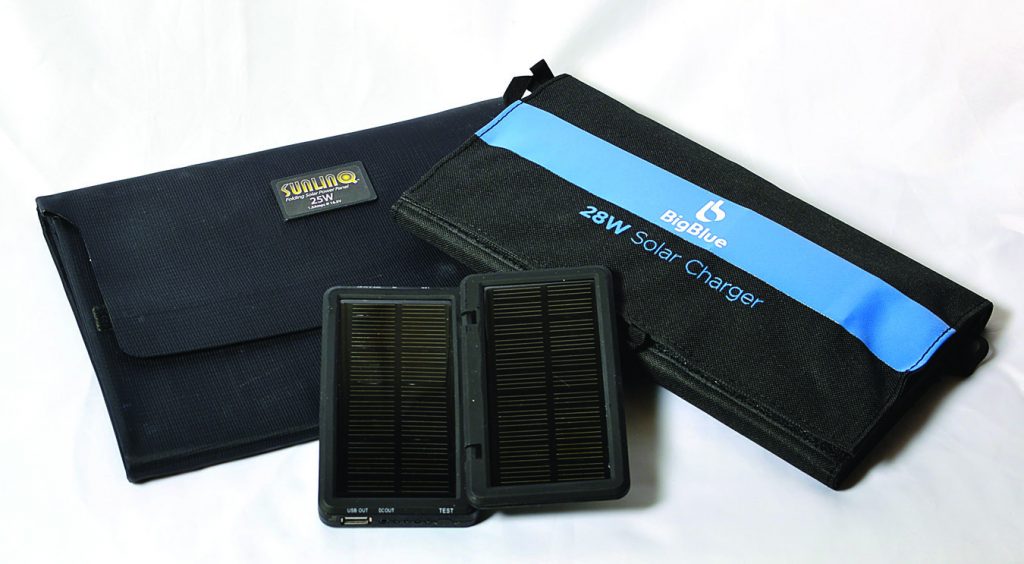
While a solar module in the 5 to 10-watt range is a perfect size to recharge a cell phone, having a fold up solar module in the larger 25 to 40-watt range will recharge multiple electronic devices at the same time, and do it much faster if you have the right adaptors. In addition, these portable solar modules will fold up to the size of a book, which makes them easy to store in the power-up bag or glove compartment.
Some solar modules are available with both a 5-volt USB type connector and a 12-volt DC type connector for recharging almost any electronic device. Keep in mind many DC powered devices utilize different types and sizes of charging plugs and different charging voltages, with 5, 9, 12, and 20-volts DC being the most common.
Summary
Having multiple types of adaptors and battery-charging devices all together in a power-up bag will make it much easier to keep all cell phones and electronic devices operating during an extended power outage, regardless of how long the power is out or what caused the outage. In addition, adding several LED flashlights and a portable radio will be invaluable, regardless if needing to stay put or having to bug out. Do not risk sitting in the dark for days with a dead cellphone, no radio or emergency lights, and absolutely no idea what’s going on outside your immediate location.
Jeff Yago is a licensed professional engineer and certified energy manager with more than 40 years of solar and emergency preparedness experience. He has contributed articles to numerous national publications, and his new book “Lights On” is available from www.offgridprepper.com or by calling 804-457-9566.


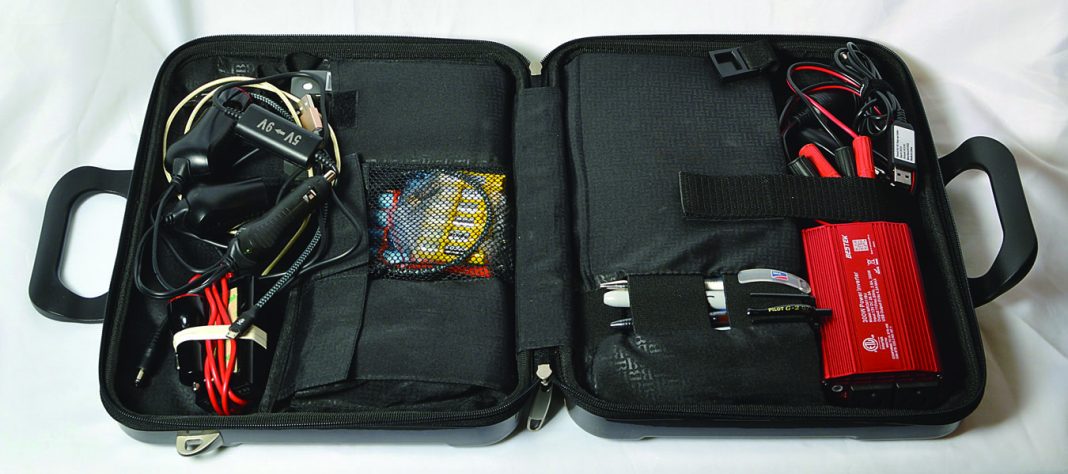












Have a small solar panel in your home, with the equipment needed to charge a small 12v battery. Also, have a small inverter for 120v. Often see 100-watt to 150-watt solar panels on sale at the local hardware for under 200 dollars.
I have news for you. You don’t need a cell phone.